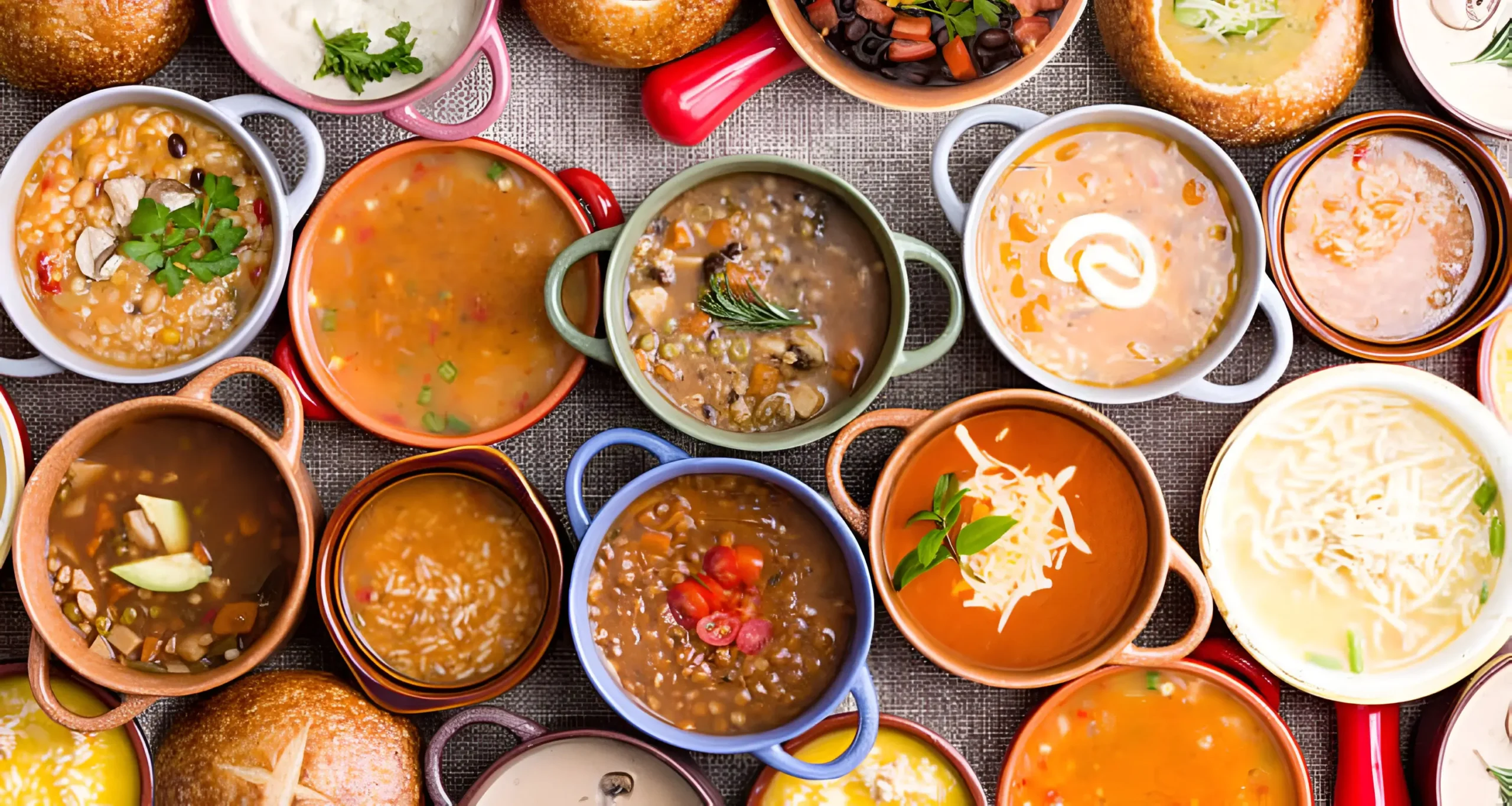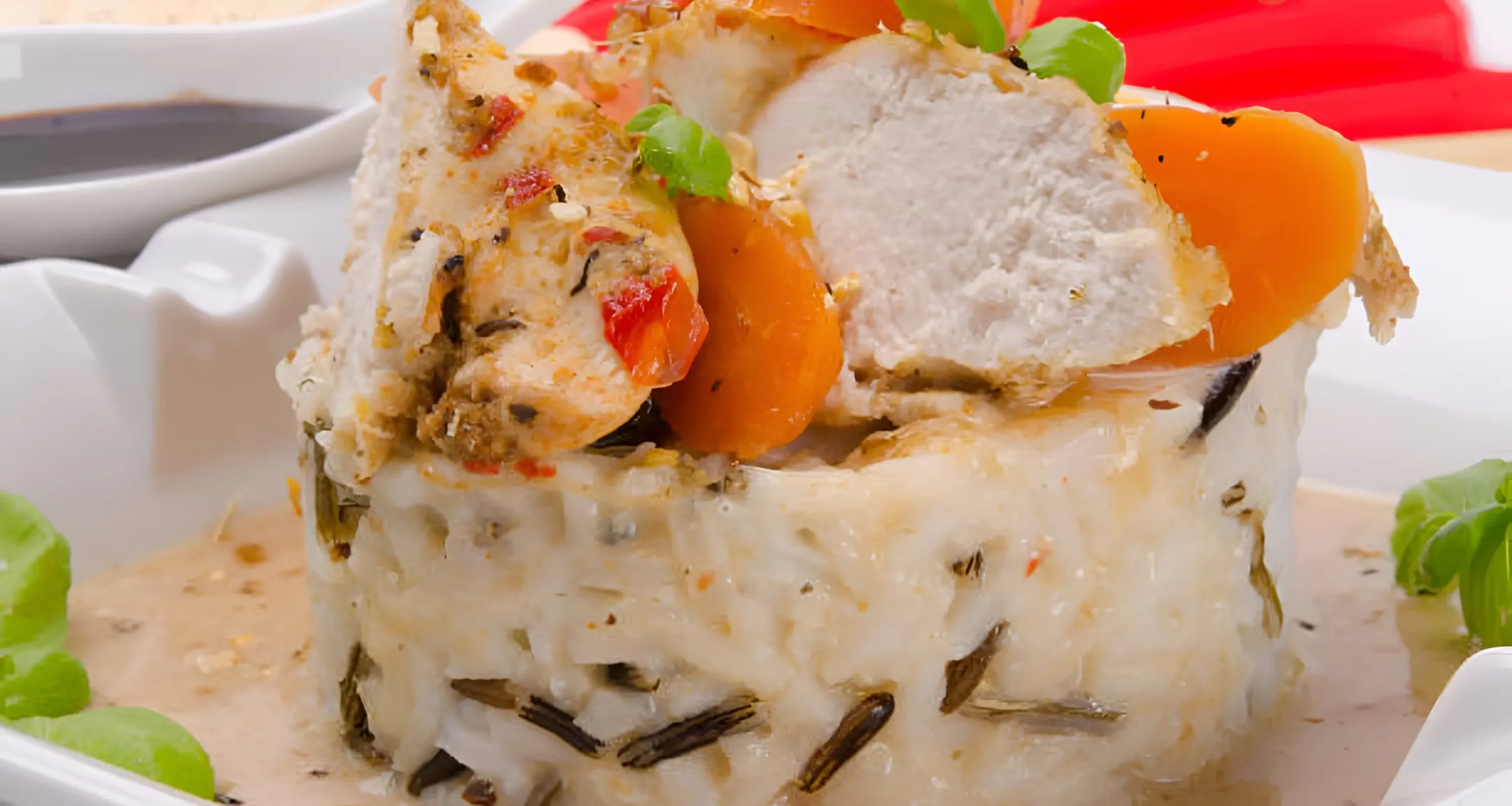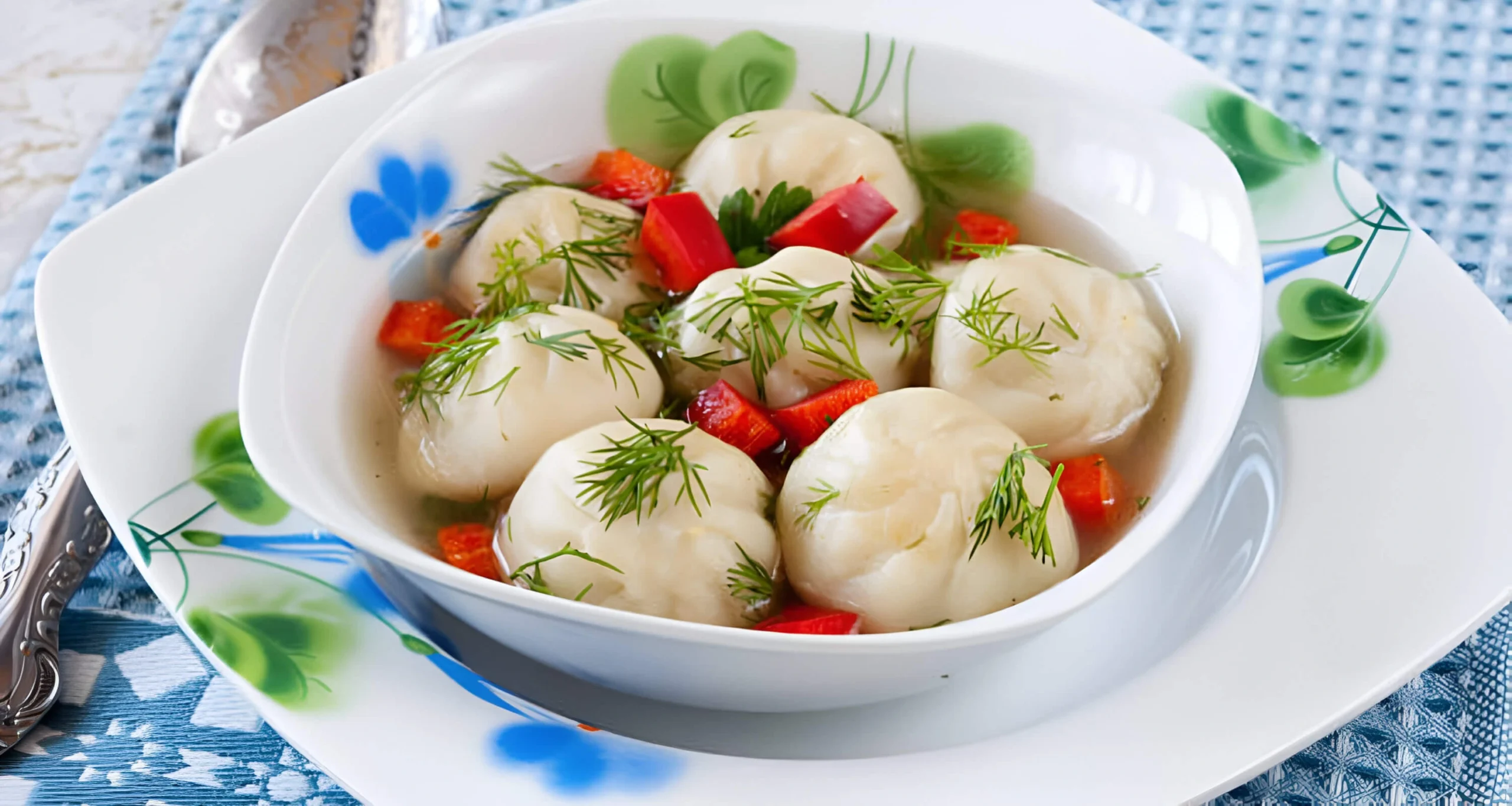Elevate Every Dish with Soup Bones for Pure Ultimate Flavor
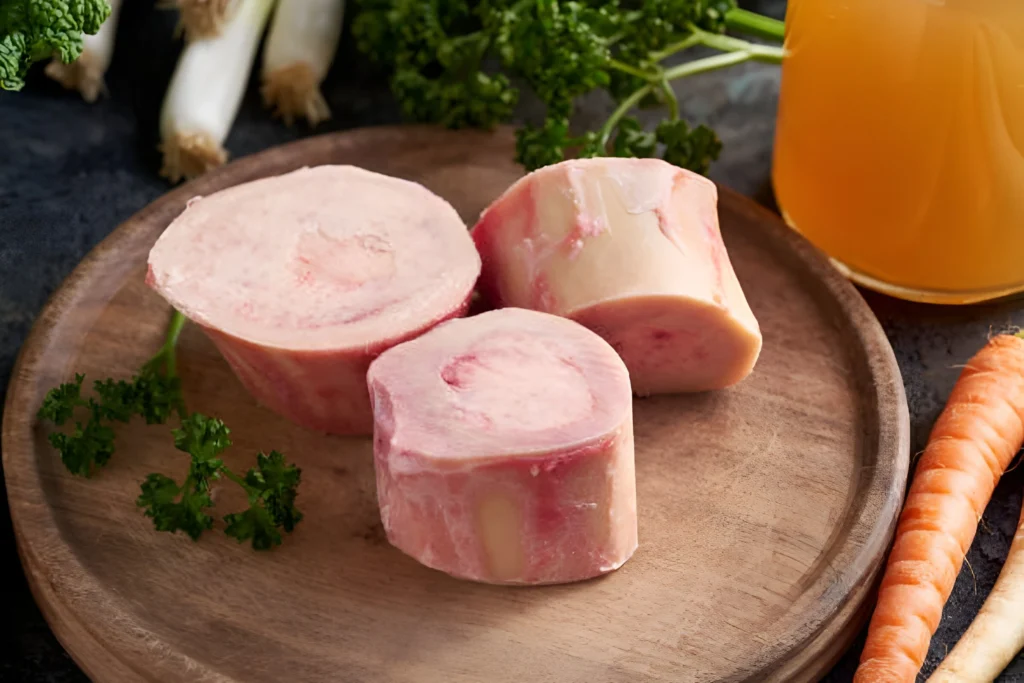
Explore the world of soup bones and see how they can make your cooking amazing. Beef soup bones are more than just a kitchen item. They add depth, richness, and unmatched flavor to your dishes.
Professional chefs know the secret of soup bones. They use them to make stews, soups, and sauces taste incredible. These ingredients bring out a wide range of flavors, making your cooking as good as a restaurant’s.
Start your adventure with soup bones here. We’ll cover how to pick the best beef soup bones and techniques to get the most flavor and nutrition from them.
Key Takeaways
- Soup bones are essential for creating rich, deep flavors
- Beef soup bones offer significant nutritional benefits
- Proper preparation can transform ordinary dishes
- Professional chefs rely on soup bones for exceptional taste
- Understanding bone selection is key to culinary success
Understanding the Magic of Soup Bones in Culinary Excellence
Soup bones are a secret ingredient loved by chefs and home cooks. They make simple dishes into amazing meals, adding flavor and nutrition. Learning how to use beef soup bones opens up a world of taste and tradition.
Soup bones are more than just ingredients. They open the door to understanding flavors and cooking methods from the past. Each bone has its own story of nutrition and cooking history.
Types of Bones Used in Traditional Cooking
Different soup bones bring unique qualities to your dishes:
- Marrow bones: Rich and creamy texture
- Knuckle bones: High collagen content
- Neck bones: Intense beef flavor
- Oxtail: Gelatinous and deeply savory
Nutritional Benefits of Bone-Based Broths
| Nutrient | Benefit |
|---|---|
| Collagen | Supports joint health |
| Minerals | Strengthens bone density |
| Amino Acids | Promotes muscle recovery |
Historical Significance in Global Cuisines
Cultures around the world have valued soup bones for centuries. From French pot-au-feu to Asian bone broths, they are more than food. They show resourcefulness and cooking skill.
“Soup bones are liquid gold in the kitchen, transforming simple ingredients into nutrient-dense masterpieces.” – Chef Maria Rodriguez
Knowing about soup bones means seeing their versatility. They add depth and nutrition to any dish, from stews to consommés.
Essential Guide to Selecting Quality Beef Soup Bones
Choosing the right beef soup bones can make your cooking amazing. Success in making rich, flavorful broths starts with picking top-notch soup bones. These bones should be full of nutrition and taste.
When looking for the best beef soup bones, keep these tips in mind:
- Look for bones with visible marrow and some meat attached
- Prefer grass-fed beef for superior nutritional profile
- Check for fresh, clean appearance without discoloration
- Select bones from reputable local butchers or farm sources
Different beef soup bones are great for different dishes:
| Bone Type | Best Used For | Flavor Profile |
|---|---|---|
| Marrow Bones | Rich broths, stock | Deep, intense |
| Knuckle Bones | Gelatin-rich stocks | Smooth, silky |
| Neck Bones | Hearty soups | Robust, meaty |
Talk to your butcher when buying soup bones. Ask about the origin of the beef, how it’s processed, and the best cuts for your recipes. Organic and grass-fed beef usually tastes better and is healthier for your soup bones.
“Quality ingredients are the foundation of exceptional cooking” – Professional Chef Recommendation
The Science Behind Extracting Flavor from Soup Bones
Unlocking the deep, rich flavors of soup bones is a complex process. It transforms simple ingredients into culinary masterpieces. When you cook beef soup bones, you’re working with proteins, minerals, and connective tissues.
The magic of soup bones comes from their molecular makeup. Simmering these bones triggers several key reactions. These reactions boost flavor and nutritional value.
Collagen and Gelatin Formation
Soup bones are full of collagen, a protein that breaks down when cooked slowly. This breakdown turns collagen into gelatin, making broths silky. The result is a smooth, rich liquid that coats your tongue with flavor.
- Collagen breaks down at temperatures between 160-180°F
- Slow cooking releases maximum gelatin content
- Protein structures gradually unwind during heating
Temperature Control for Optimal Results
Mastering the art of cooking beef soup bones requires careful temperature control. Cooking them low and slow breaks down proteins without losing flavor.
| Temperature Range | Cooking Effect |
|---|---|
| Below 160°F | Minimal protein extraction |
| 160-180°F | Optimal collagen conversion |
| Above 200°F | Protein structure breakdown |
Duration and Its Impact on Flavor
The cooking time greatly affects the taste of your soup bones. Short cooking times keep flavors light. Longer cooking times bring out deeper, more complex flavors.
- 2-4 hours: Light, delicate broth
- 6-8 hours: Rich, developed flavor
- 12+ hours: Intense, concentrated taste
By grasping these scientific principles, you can turn ordinary soup bones into extraordinary dishes.
Preparing and Cleaning Soup Bones for Cooking
Getting your soup bones ready is key to making tasty broths and stocks. Quality beef soup bones need careful prep to boost flavor and ensure safety. The right cleaning and prep can turn simple bones into a culinary gem.
First, check your soup bones for any extra fat or unwanted tissue. Fresh bones from a good butcher might need little cleaning. But, always rinse them well.
- Rinse beef soup bones under cold running water
- Remove surface debris with a clean kitchen towel
- Trim excess fat using a sharp kitchen knife
- Pat bones dry with paper towels
Blanching is a pro technique to clean soup bones. Briefly boil the bones in water for 2-3 minutes, then cool them in an ice bath. This method makes broths clearer by removing blood and dirt.
| Bone Type | Cleaning Method | Preparation Time |
|---|---|---|
| Marrow Bones | Gentle rinse, minimal trimming | 5-10 minutes |
| Knuckle Bones | Thorough cleaning, blanching recommended | 10-15 minutes |
| Neck Bones | Careful trimming, cold water rinse | 8-12 minutes |
Professional chefs see preparing soup bones as an art. By spending time to clean and prep your beef soup bones, you’ll make your dish richer and more flavorful.
Basic Techniques for Roasting Beef Soup Bones
Roasting beef soup bones is a skill that turns simple ingredients into rich flavors. Learning how to cook beef soup bones right opens up a world of deep tastes. These tastes can make any dish go from basic to amazing.
Roasting beef soup bones is more than just cooking. It’s a way to build flavors that make the bones taste even better. The caramelization during roasting brings out complex tastes that other cooking methods can’t match.
Seasoning Methods for Enhanced Flavor
How you season beef soup bones can greatly affect the taste. Here are some seasoning tips:
- Dry rubs with sea salt and cracked black pepper
- Herb blends featuring rosemary, thyme, and sage
- Garlic powder and paprika combinations
- Light olive oil coating for better seasoning adhesion
“The secret to incredible flavor is in the roasting process and thoughtful seasoning.” – Professional Chef Recommendation
Optimal Roasting Temperatures and Times
Finding the right temperature is key when roasting beef soup bones. Experts suggest these guidelines for the best results:
| Bone Type | Temperature | Roasting Time |
|---|---|---|
| Marrow Bones | 425°F | 30-40 minutes |
| Knuckle Bones | 400°F | 45-55 minutes |
| Neck Bones | 375°F | 50-60 minutes |
Getting perfect beef soup bones takes patience and attention. Make sure to turn the bones halfway through. This helps them caramelize evenly and brings out the best flavors.
Creating Rich and Flavorful Bone Broth Fundamentals
Making a tasty soup with beef bones needs patience and skill. Your journey starts with picking top-notch soup bones for deep flavors. The key to a great soup bones recipe is knowing the basic techniques to turn simple ingredients into a dish to remember.
First, gather your key ingredients:
- Fresh beef soup bones
- Aromatic vegetables like onions and carrots
- Fresh herbs
- Filtered water
- Sea salt
The magic of bone broth comes from slow, careful simmering. Low and slow is your guide for making soup with beef bones. Let the bones give up their collagen and minerals, making a gelatinous, nutrient-rich liquid. This liquid is the base for many recipes.
“A great bone broth is like liquid gold in the kitchen” – Professional Chef Recommendation
Your cooking method is very important. Roast the bones first to get deeper flavors. Then, put them in a big pot. Pour in cold water, and let it simmer gently. Remove any foam that forms to keep the broth clear and clean.
Perfect bone broth needs 12-24 hours of slow cooking. The longer it cooks, the more nutrients and flavor it gets from the soup bones.
Advanced Methods for Soup Bones in Stock Making
Turning soup bones into rich stock needs more than basic cooking. Both pros and home cooks have found ways to get the most flavor and nutrition from beef soup bones.
Stock making is all about mastering the fine details. Whether you’re experienced or just starting, learning advanced soup bones techniques can make your dishes better.
Traditional Cooking Approaches
Traditional stock making uses old methods that have been passed down. These include:
- Slow simmering in large stockpots
- Roasting bones before stock preparation
- Using classic mirepoix vegetable combinations
- Long, gentle cooking to extract maximum nutrients
Modern Stock Making Equipment
New technology has changed how we work with soup bones. Today’s tools offer better precision and ease:
| Equipment | Advantages | Best For |
|---|---|---|
| Pressure Cooker | Faster cooking | Busy home cooks |
| Sous Vide Device | Precise temperature control | Gourmet stock making |
| Instant Pot | Multi-functional | Versatile stock preparation |
Exploring both old and new ways to use beef soup bones is key. Each approach adds something special to your stock. This lets you make flavorful bases for many recipes.
Incorporating Soup Bones into Classic Recipes
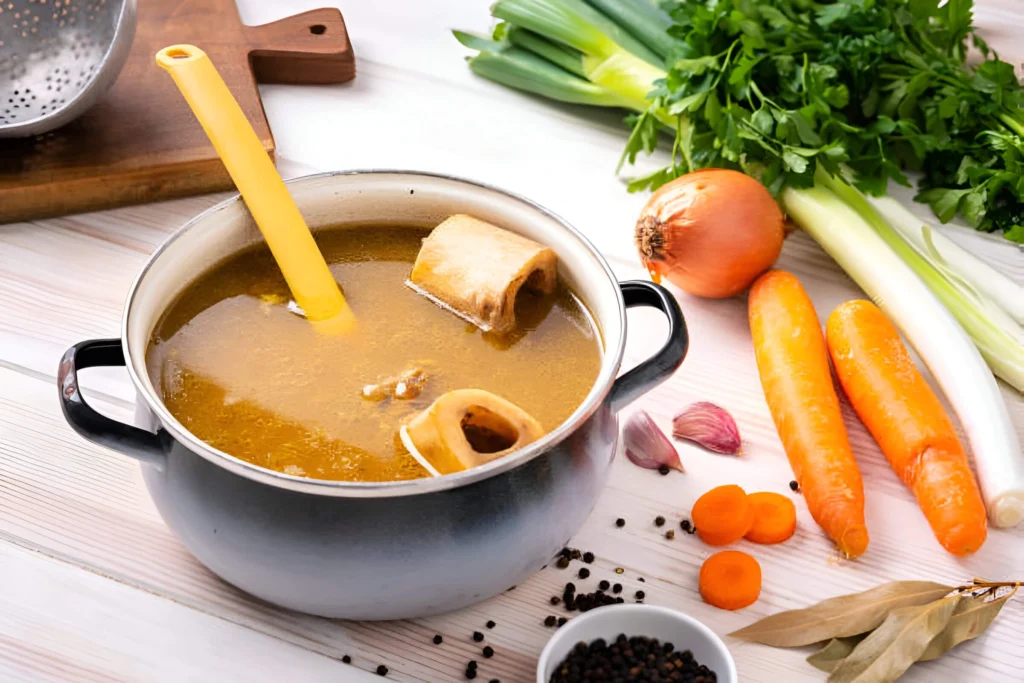
Soup bones are a secret ingredient that can make simple dishes amazing. They add rich flavors to traditional recipes, making them stand out. This is true across many cuisines.
Here are some classic soup bones recipe ideas to spark your creativity:
- French Pot-au-Feu: A hearty beef stew that showcases the incredible depth of soup bones
- Italian Osso Buco: A luxurious braised meat dish using marrow-rich beef bones
- Vietnamese Pho: A fragrant soup where beef bones create an unparalleled broth
When cooking with soup bones, keep these tips in mind:
- Roast bones before simmering to enhance flavor complexity
- Simmer slowly to extract maximum nutrients and taste
- Strain carefully to achieve a clear, rich broth
“The secret to exceptional cooking lies in understanding how to unlock the full flavor of every ingredient” – Chef Michael Ruhlman
| Cuisine | Signature Dish | Bone Type |
|---|---|---|
| French | Pot-au-Feu | Marrow Bones |
| Italian | Osso Buco | Veal Shanks |
| Vietnamese | Pho | Beef Knuckle Bones |
With practice, your soup bones recipe can become a masterpiece. Each cuisine has its own way of using beef bones. This creates dishes that are both satisfying and flavorful.
Maximizing Flavor: Tips for Using Beef Soup Bones
Beef soup bones are a treasure in the kitchen. They can turn simple dishes into amazing meals. To get the most out of them, you need skill and creativity.
Getting the best from beef soup bones takes careful preparation and the right ingredients. The right steps can bring out their full flavor and nutrition.
Aromatics and Complementary Ingredients
Boost the flavor of your beef soup bones with the right aromatics:
- Fresh garlic cloves
- Sweet yellow onions
- Fresh thyme and rosemary
- Whole black peppercorns
- Bay leaves
“The secret to exceptional bone broth lies in the quality of ingredients and patience during preparation.” – Professional Chef
Storage and Preservation Methods
Storing beef soup bones right keeps their flavor and ensures safety. Here are some top ways to preserve them:
| Storage Method | Duration | Best Practices |
|---|---|---|
| Refrigeration | 3-4 days | Store in airtight container |
| Freezing | 3-6 months | Wrap tightly in freezer paper |
| Broth Canning | 1 year | Use pressure canner |
With these tips, you can turn beef soup bones into delicious dishes. They will make your meals tasty and healthy.
Common Mistakes to Avoid When Cooking with Soup Bones
Learning to cook beef soup bones needs skill and focus. Many home cooks make mistakes that ruin their broth or stock. Knowing these common errors will help you make delicious dishes every time.
- Avoid overcrowding the pot when preparing soup bones
- Never skip the initial skimming process
- Watch your cooking temperature carefully
- Season appropriately throughout the cooking process
Keeping the right temperature is key when cooking soup bones. Boiling too hard can ruin the broth’s texture and clarity. Instead, simmer slowly to let flavors blend and proteins extract well.
| Mistake | Consequence | Solution |
|---|---|---|
| Boiling Too Aggressively | Cloudy broth | Maintain low, steady simmer |
| Insufficient Skimming | Greasy texture | Remove foam regularly |
| Under-seasoning | Bland flavor | Layer seasonings throughout cooking |
When cooking soup bones, patience is your greatest ally. Rushing or skipping important steps can ruin a good broth. Take your time to learn the details of cooking with soup bones, and you’ll make broths as good as restaurants.
Start with quality beef soup bones and treat them right. Clean them well, roast them for flavor, and cook with care.
Health Benefits of Cooking with Beef Soup Bones
Beef soup bones are more than just a food item. They are packed with nutrients that can greatly improve your health. By simmering these bones, you release essential nutrients that support your body’s health.
Cooking with beef soup bones is a natural way to increase your nutrient intake. The slow cooking process pulls out minerals and compounds that are hard to get from other foods.
Mineral Content and Absorption
Soup bones are full of important minerals that are good for your health. Your body can easily take in these nutrients through bone broth. This provides:
- Calcium for strong bones
- Magnesium for muscle function
- Phosphorus for cellular repair
- Trace minerals that support metabolic processes
“Food is the most powerful medicine when prepared with intention and understanding.” – Nutritional Expert
Joint Health and Collagen Benefits
The collagen in beef soup bones can greatly benefit your joint health. As you get older, your body makes less collagen. Eating soup bones can help replace this protein, which may:
- Reduce joint inflammation
- Support cartilage regeneration
- Improve joint mobility
- Potentially ease arthritis symptoms
Pro tip: Drinking bone broth regularly might help keep your body flexible and reduce joint pain.
Sustainable Practices in Using Soup Bones
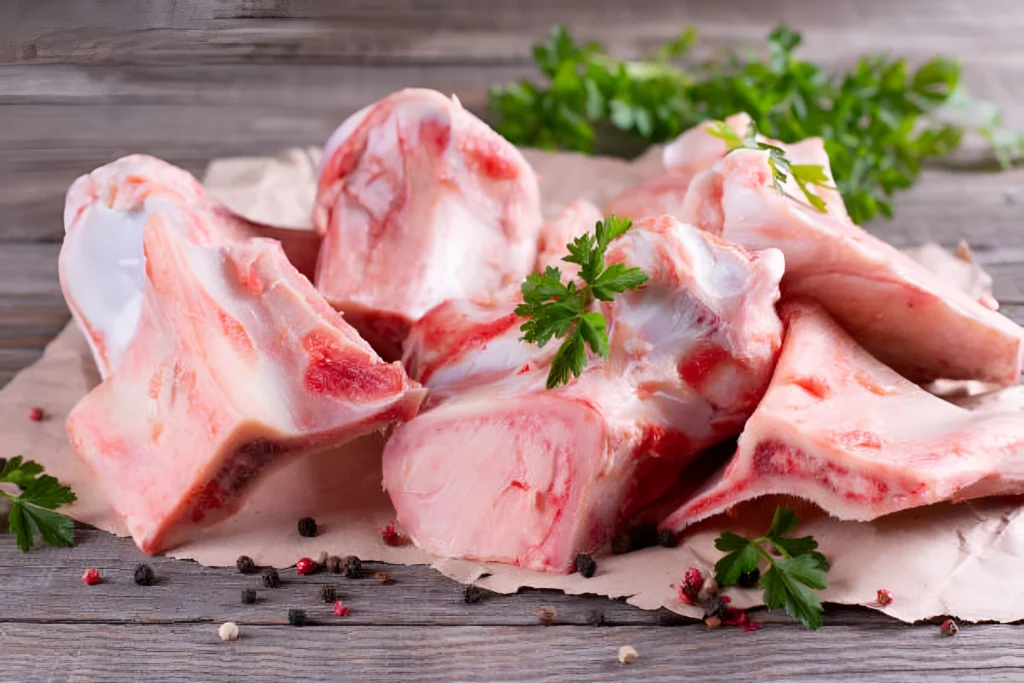
Turning soup bones into tasty meals is more than just about taste. It’s about making choices that are good for our planet. By exploring what to do with beef soup bones, you help reduce waste and support fair food production.
Starting with sustainable soup bones means being mindful of where you buy them. Here are some tips for cooking in a way that’s kind to the environment:
- Purchase soup bones from local farms that treat animals well.
- Choose grass-fed beef to help the planet.
- Buy from butchers who care about animal welfare.
- Use all parts of the animal to cut down on waste.
Your cooking methods can also help the planet. Low-temperature slow cooking saves energy and brings out the best flavors. Use a slow cooker or Dutch oven to make delicious broths without wasting energy.
Composting vegetable scraps from making bone broth also helps the environment. By doing this, you’re not only making great food but also helping our planet.
“Sustainable cooking begins with conscious ingredient selection and mindful preparation.”
Choosing sustainable soup bones is a big step towards eating responsibly. Your food choices can really help support fair food systems and lessen waste.
International Dishes Featuring Soup Bones
Soup bones are loved worldwide, adding flavor to dishes in many cultures. They are a key part of traditional cooking globally. This shows how soup with beef bones is a staple in many places.
Cooking traditions everywhere use soup bones in amazing ways. They make everything from slow-cooked broths to thick stews. These recipes show how versatile beef bones can be in making great meals.
Asian Bone Broth Variations
Asian cooking is known for getting lots of flavor from soup bones. Japanese and Korean methods turn beef bones into unforgettable dishes:
- Japanese Tonkotsu Ramen: A creamy, rich broth made by simmering pork bones for hours
- Korean Seolleongtang: A milky white beef bone soup with intense depth of flavor
- Vietnamese Pho: A delicate soup bones recipe featuring aromatic spices
European Traditional Recipes
European cooking also has its own special ways of using soup bones. They use local ingredients and cooking styles:
| Country | Dish | Key Characteristics |
|---|---|---|
| Scotland | Cock-a-Leekie Soup | Chicken and beef bone broth with leeks |
| Spain | Cocido Madrileño | Complex beef bone stew with multiple meats |
| France | Pot-au-Feu | Robust beef bone soup with root vegetables |
These recipes from around the world show how soup bones are loved everywhere. Each culture adds its own twist, making delicious and healthy dishes.
Seasonal Considerations for Soup Bone Cooking
Cooking with soup bones changes with the seasons, bringing new flavors to your table. Whether it’s beef soup bones, your cooking can reflect the time of year. This way, you can enjoy meals that fit each season perfectly.
In summer, you’ll want to make lighter soups with soup bones. Look to create broths that are refreshing and less thick. Here are some tips for summer soup bones:
- Use herb-infused lighter beef soup bones stocks
- Create chilled bone broths for summer soups
- Incorporate fresh seasonal vegetables
- Experiment with cold bone broth-based gazpachos
Winter is the time for hearty soups made with soup bones. These soups are perfect for warming up on cold days. Slow cooking brings out the best flavors, making your meals more satisfying.
What’s available seasonally is key in soup bone cooking. Visit local farmers markets to find the best beef soup bones and other ingredients. This not only improves your cooking but also supports local farmers.
Pro tip: Always adjust your soup bone recipes to match seasonal produce and temperature variations for the most authentic and satisfying culinary experience.
Professional Chef Tips for Working with Soup Bones
Professional chefs know how to turn simple beef soup bones into amazing dishes. They use special techniques to make bone-based meals taste great and complex.
“The secret to exceptional bone broth is patience and understanding the bone’s full flavor,” says Chef Michael Ruhlman, a famous culinary expert.
Professional chefs share some key tips for working with beef soup bones:
- Roast bones at high temperatures to get deep, caramelized flavors
- Use a mix of bone types for the best nutritional mix
- Add aromatic vegetables during cooking
- Strain broths several times for clear results
Temperature control is key when cooking soup bones. Slow, steady heat breaks down collagen, making the broth rich and gelatinous. This is the base of great dishes.
| Bone Type | Cooking Technique | Recommended Temperature |
|---|---|---|
| Marrow Bones | Slow Roasting | 375°F |
| Knuckle Bones | Extended Simmering | Low Heat (185-200°F) |
| Oxtail | Braising | 325°F |
Professional chefs stress the importance of using high-quality, grass-fed bones. The quality of your bones greatly affects the flavor and nutrition of your broth.
These expert methods turn simple soup bones into incredible dishes. Home cooks can now make restaurant-quality meals in their own kitchens.
Conclusion
Exploring soup bones opens up a world beyond cooking. Beef soup bones can make your dishes richer and more flavorful. They add depth to every meal, whether you’re following old recipes or trying new techniques.
Using soup bones connects you to a long-standing cooking tradition. It’s not just about how you cook; it’s about the history and culture behind it. By learning about flavor extraction and roasting, you can turn simple meals into something special. Plus, using beef soup bones is good for your health and the planet.
Remember, soup bones are more than just an ingredient. They’re a key to unlocking new flavors and techniques in your cooking. Try different methods and recipes to see what you can create. Your kitchen is a place to express yourself, and soup bones are your tool to make amazing dishes.
The world of soup bones is full of possibilities. Dive in, learn, and get creative. With beef soup bones, your cooking will become more exciting and delicious.
FAQ
What are soup bones and why are they important in cooking?
Soup bones are meat-bearing bones used to make rich, flavorful broths and stocks. They add deep, complex flavors and nutrients to dishes. This is because they release collagen, minerals, and essential nutrients during slow cooking.
How do I select the best quality beef soup bones?
Choose fresh bones from grass-fed or organic beef. Look for bones with meat attached, a healthy color, and minimal discoloration. Opt for marrow bones, knuckle bones, or joint bones for the best flavor and nutrition.
What’s the difference between roasting and boiling soup bones?
Roasting bones before making broth caramelizes their surface, adding a deeper flavor. Boiling bones directly extracts nutrients quickly but may have a less complex taste. Roasting enhances the broth’s depth and complexity.
How long should I simmer soup bones to make a good broth?
Simmer beef soup bones for 12-24 hours on low heat for the best flavor and nutrients. Beef bones need longer cooking times than chicken or fish bones to release their flavors and break down connective tissues.
Can I reuse soup bones multiple times?
While you can reuse soup bones, the flavor and nutritional content decrease with each use. The first batch is the most flavorful and nutrient-dense. Subsequent uses will have less flavor and nutrition.
Are soup bones good for my health?
Yes, soup bones are very nutritious. They are rich in collagen, minerals like calcium and magnesium, and support joint health. They also improve gut function and provide essential amino acids. Slow-cooked broth is considered a healing food in many cultures.
How should I store leftover bone broth?
Store bone broth in airtight containers in the fridge for up to 5 days. Freeze it in portion-sized containers or ice cube trays for up to 3-4 months. Cool the broth completely before storing to prevent bacterial growth.
What’s the best way to remove fat from bone broth?
Refrigerate the broth until the fat solidifies on top. Then, scrape off the fat layer with a spoon. Or, use a fat separator while the broth is warm to remove excess fat before storing or using in recipes.
Can I make bone broth in a pressure cooker?
Absolutely! A pressure cooker reduces cooking time while keeping flavor and nutrients high. You can make bone broth in 2-3 hours, which is quicker than the traditional 12-24 hour simmering method.
Are soup bones expensive?
Soup bones are usually affordable. They are often cheaper than prime cuts of meat. You can find them at local butchers, farmers markets, or grocery store meat departments at a reasonable price. Some butchers might even give them away for free or at a low cost.
Add a Dash of Your Thoughts!
There are no reviews yet. Be the first one to write one.


